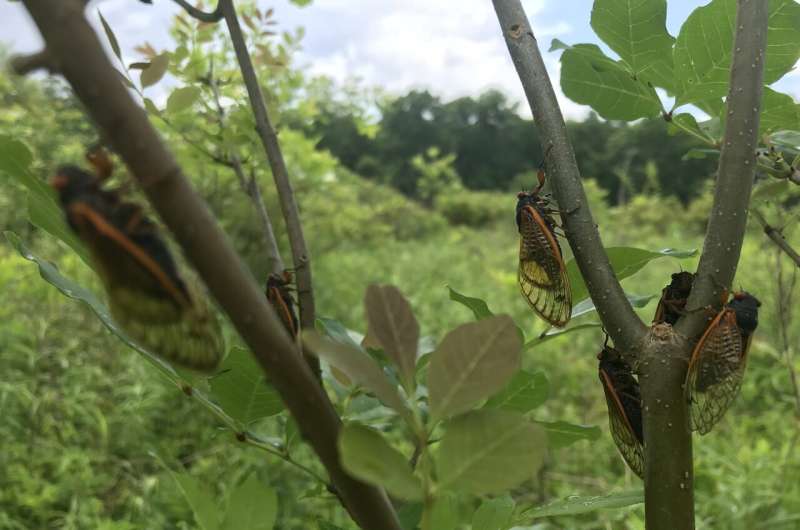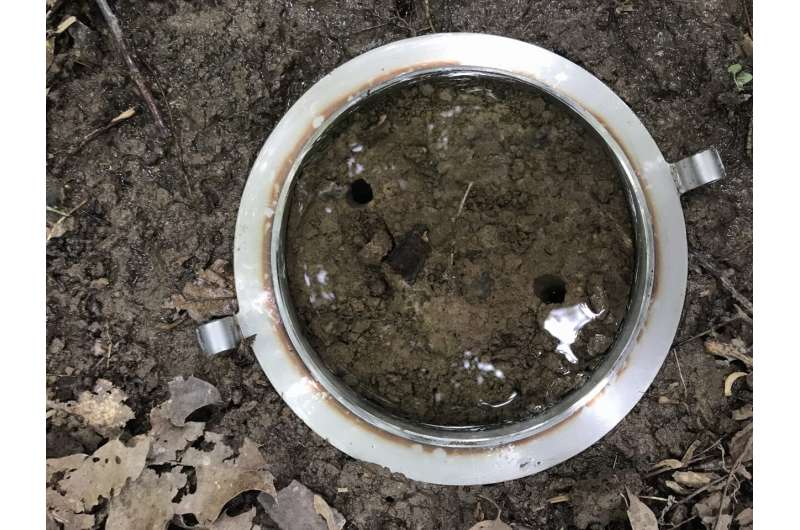Brood X Cicadas left their mark on soils

Long after the deafening cacophony of the Brood X cicadas ended in mid-June, their ecological legacy was still playing out underground, according to a new study of cicada burrow-riddled ground being presented at the AGU Fall Meeting. The research found that the little holes in the ground left behind by emerging cicadas had a significant impact on how water penetrated soils, with the greatest effects in areas away from human activities.
When multiplied by billions of emergence burrows, the change in infiltration on such a vast scale for even a few weeks or months demonstrated how any kind of soil disturbances—even very infrequent events like Brood X—can affect vegetation, runoff, groundwater recharge rates and surface and groundwater quality.
"We looked at the effects long after their little screaming bodies were gone," said Ellen Bergan, a research assistant in the Geography Department at Indiana University Bloomington, who worked on the project under the direction of associate professor Darren Ficklin. Bergan will be presenting a poster on the study on Monday, 13 December from 3:00-5:00 p.m. at AGU Fall Meeting 2021.
The Brood X cicadas are an endemic insect that emerge from the ground every 17 years from Indiana east to the mid-Atlantic states. They mate, lay eggs and die within several weeks, by mid-June.
Using an instrument called an infiltrometer, the research team examined differences in water infiltration rates between sites that had many cicada emergence holes and nearby sites with few holes in central Indiana—one of the hotspots of Brood X emergence. They also looked at the Brood X emergence holes across different land uses, comparing undisturbed sites in forests and preserves to more heavily used and disturbed areas like city parks.

They found the borrows significantly increased the water infiltration rates, but only at the sites undisturbed by human activities. The likely explanation for the difference, Bergan said, is that in more disturbed areas the soils tend to be more tamped down and compacted. This causes burrows to collapse more quickly than in undisturbed areas.
"We saw the infiltration rates decrease over time due to the holes filling with sediment and debris—but we saw a more rapid decrease in infiltration at disturbed locations due to them being more exposed to the elements," Bergan said.
More information: Paper info: H15N-1205 – Influence of the Brood X Cicada Emergence on Soil Water Infiltration Rates: agu.confex.com/agu/fm21/meetin … app.cgi/Paper/860604
Provided by American Geophysical Union


















